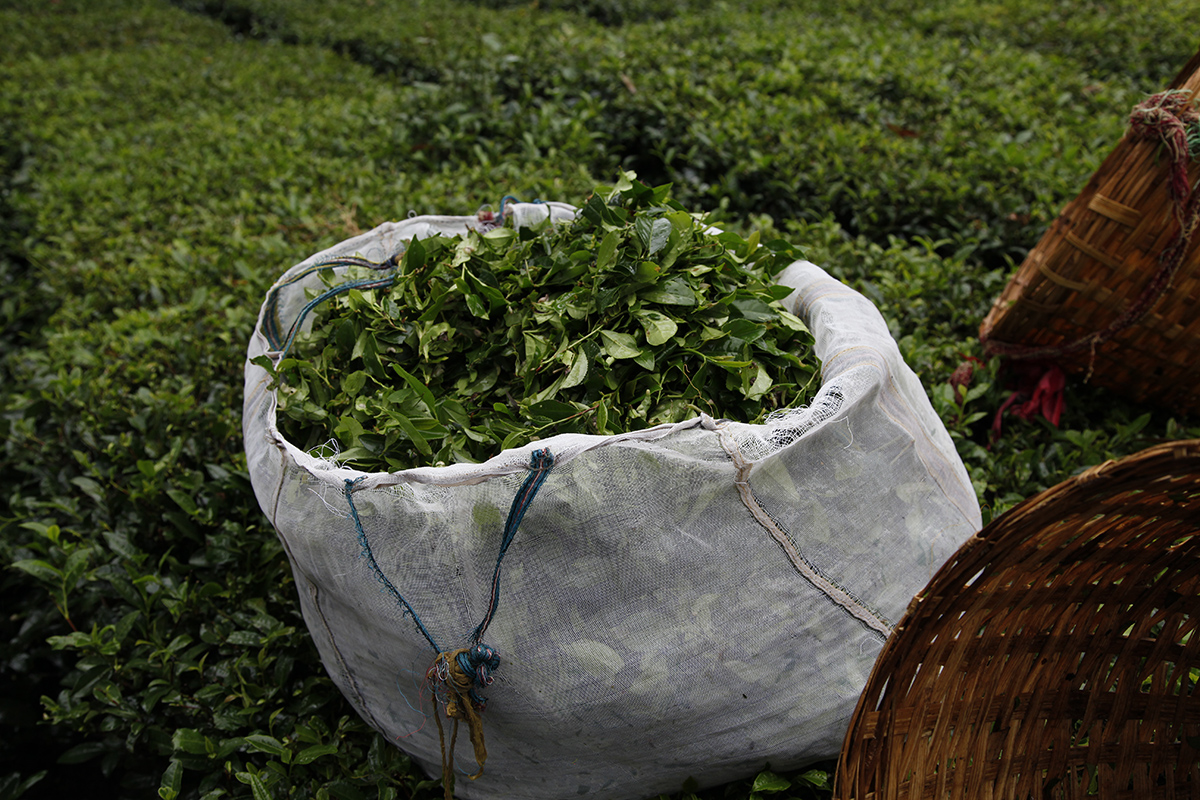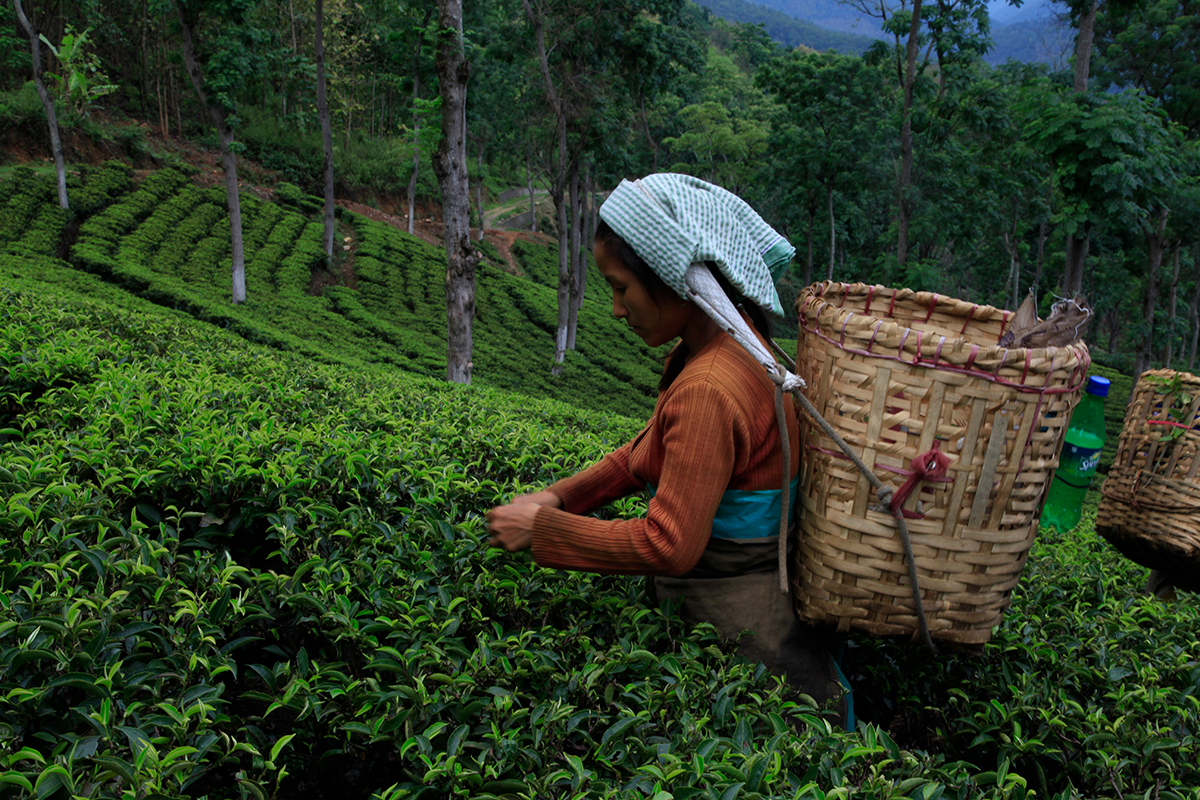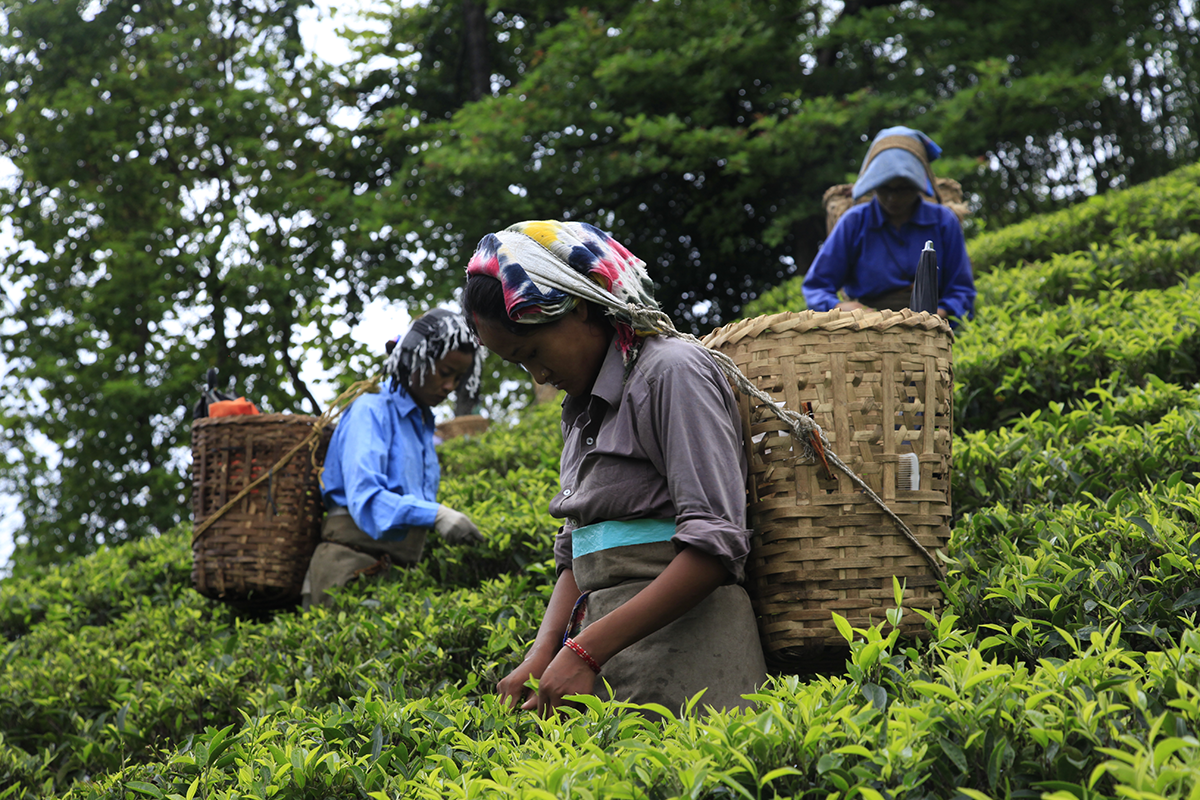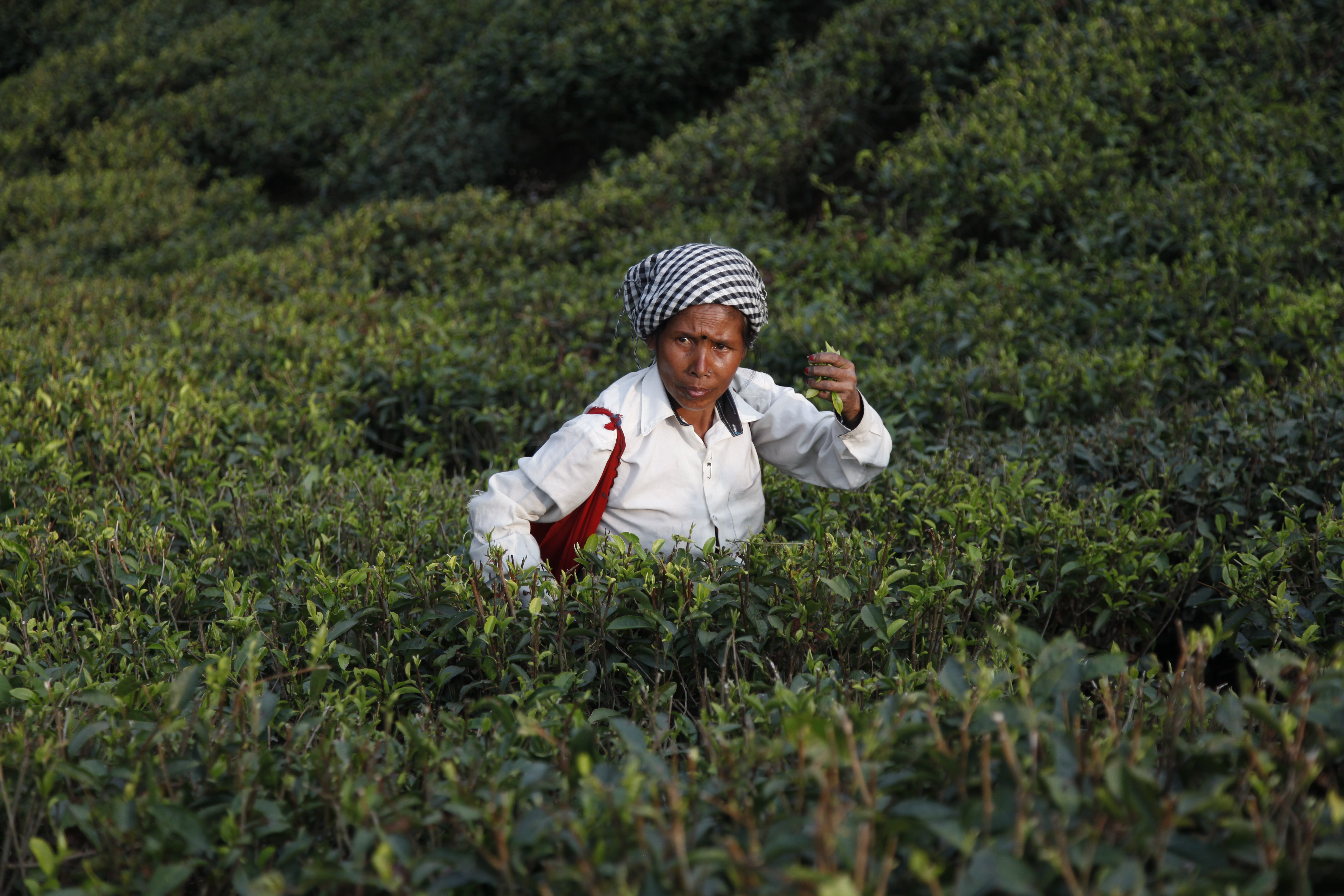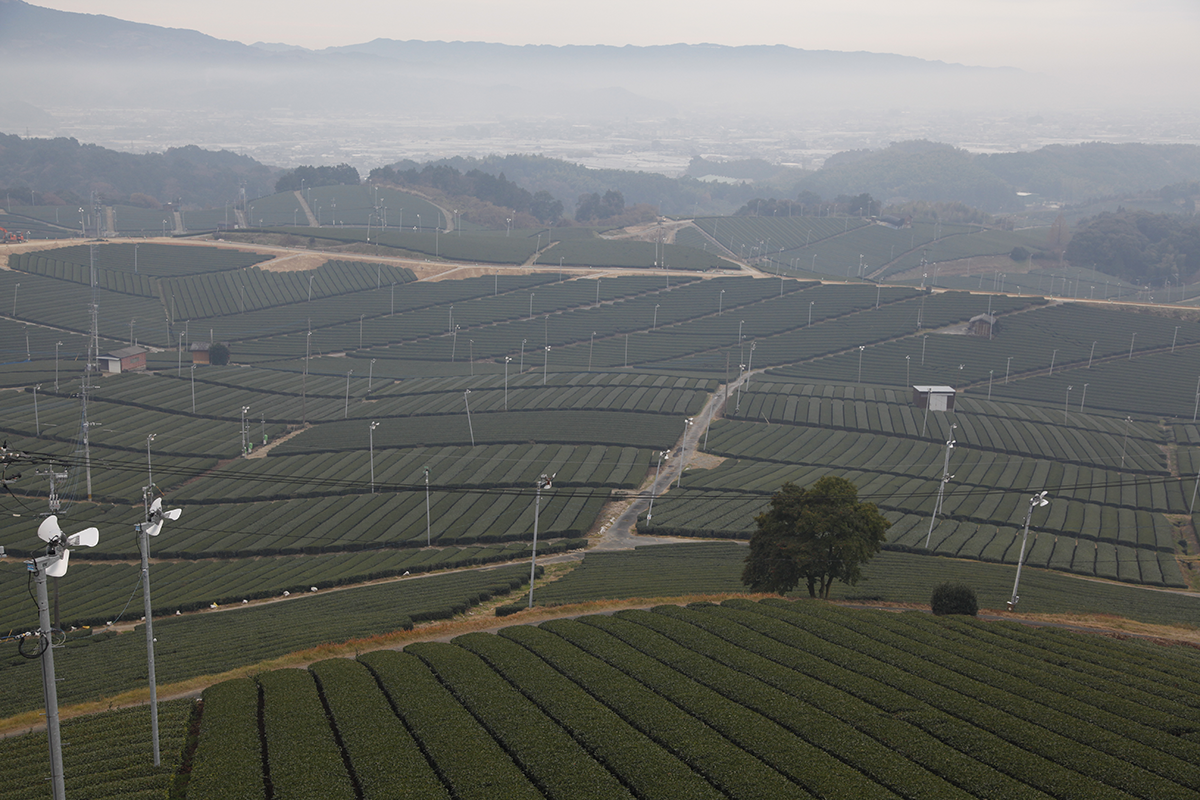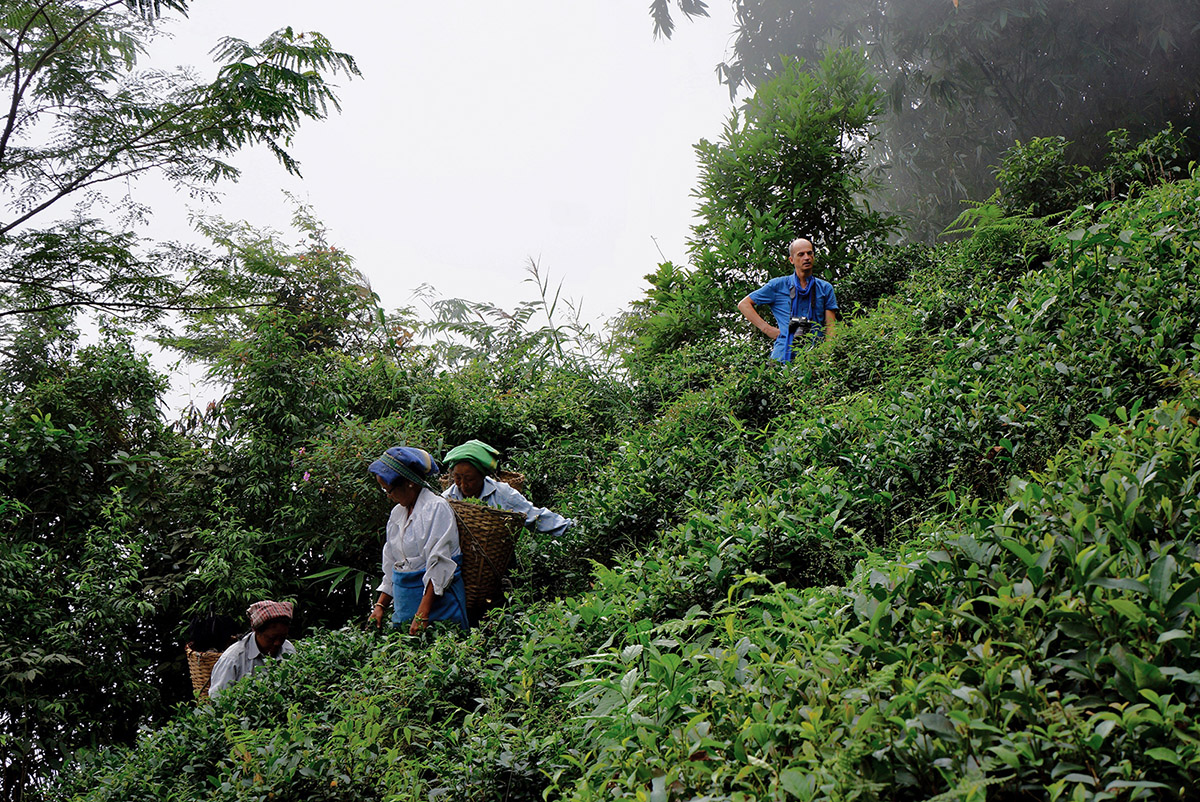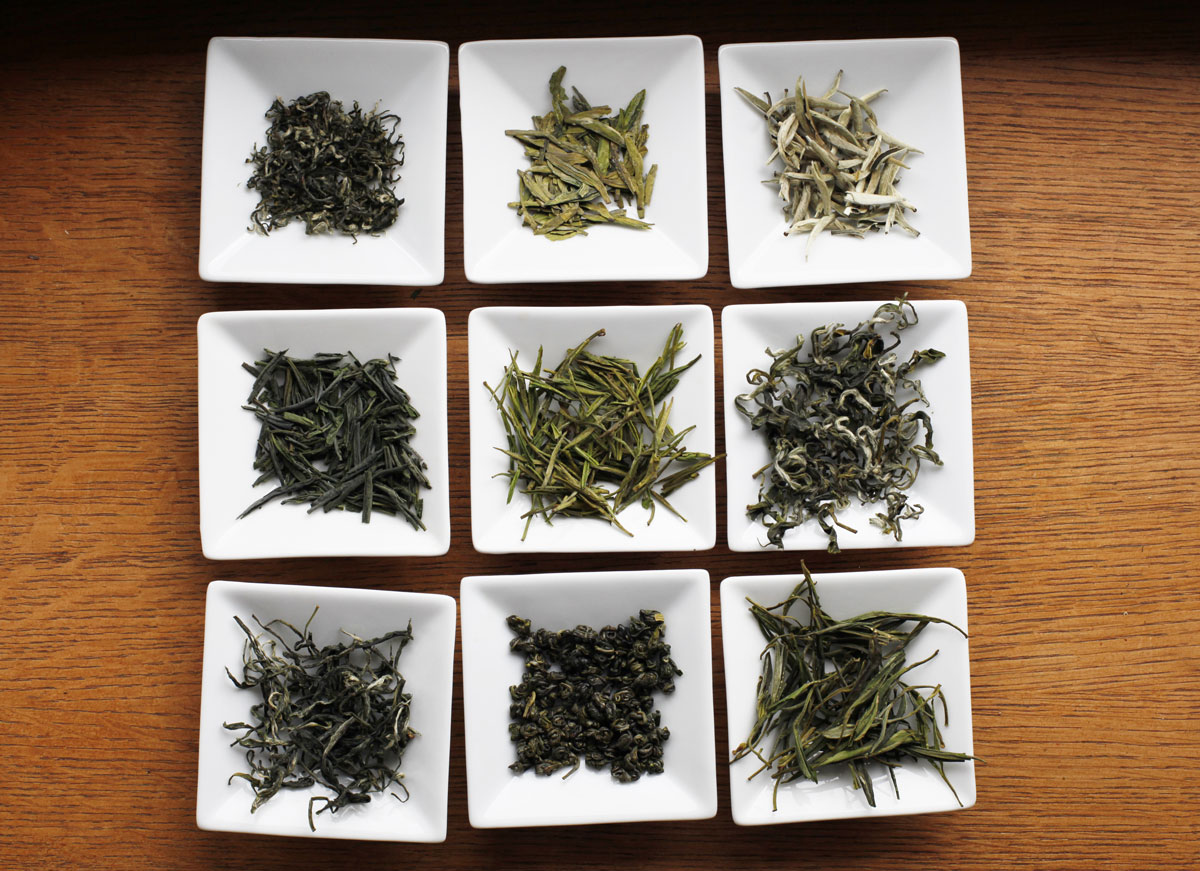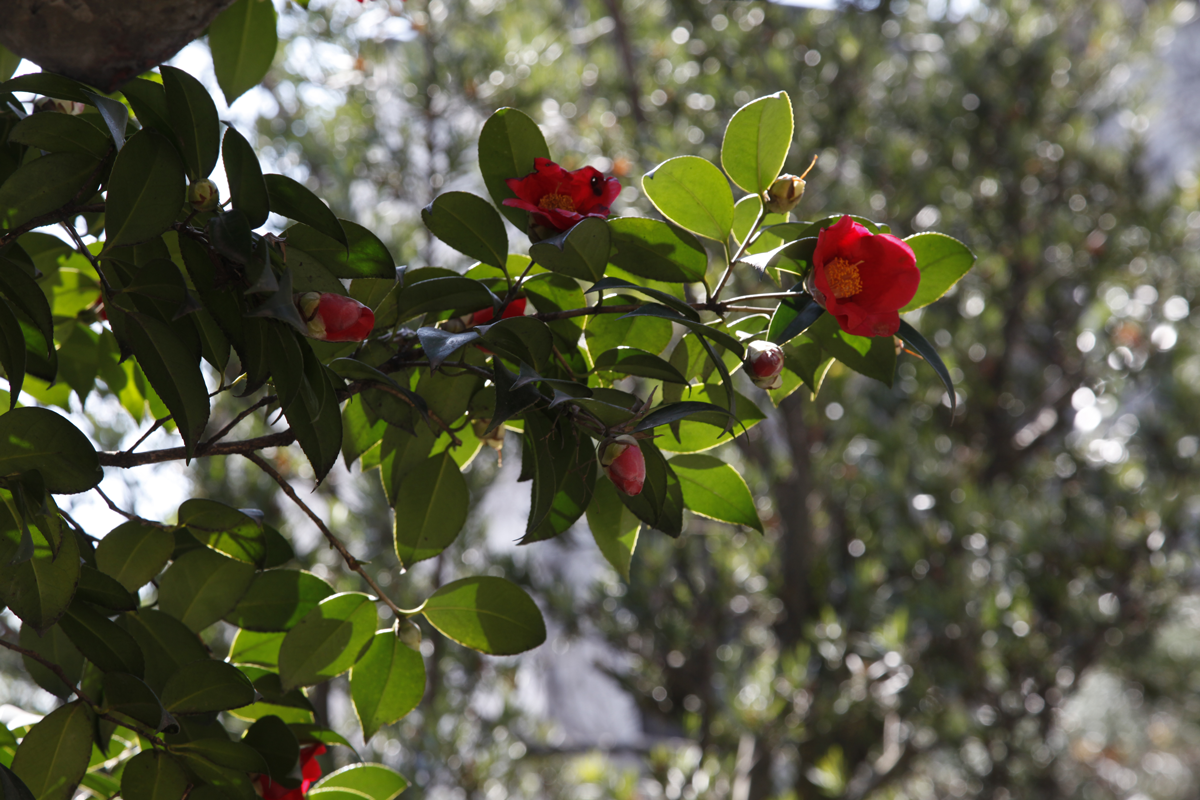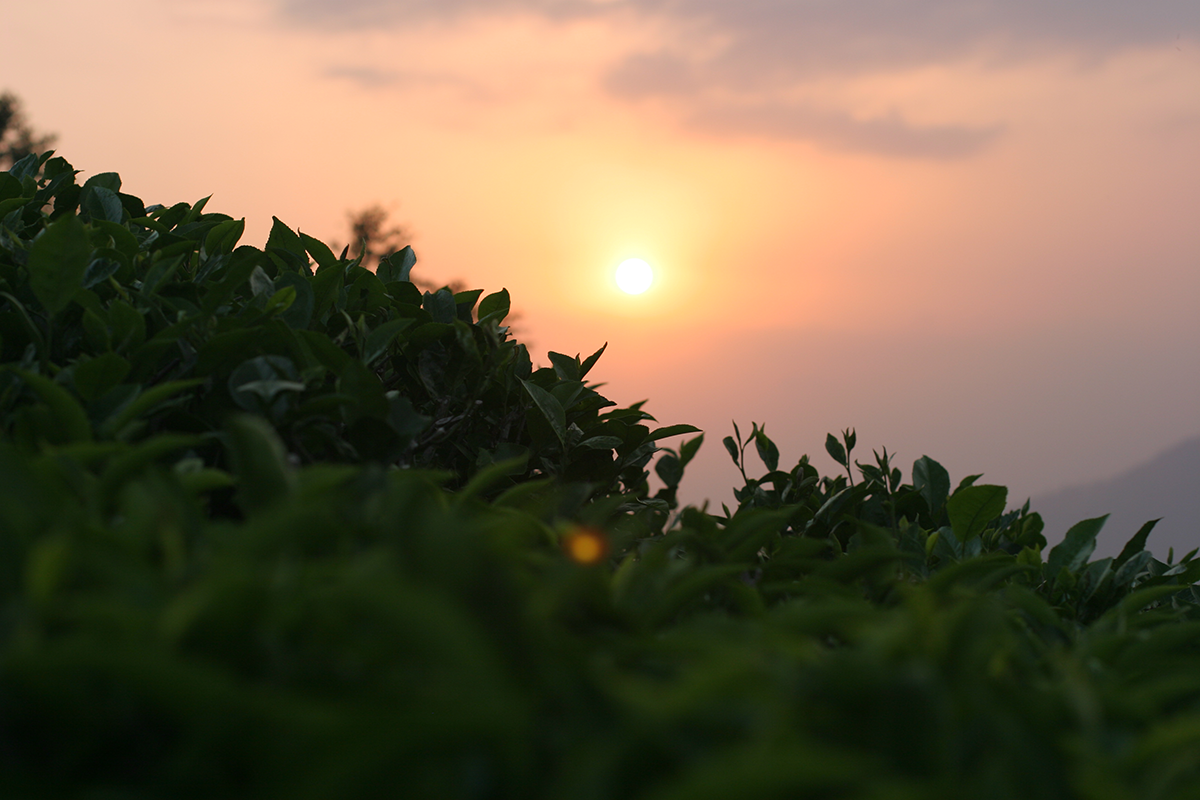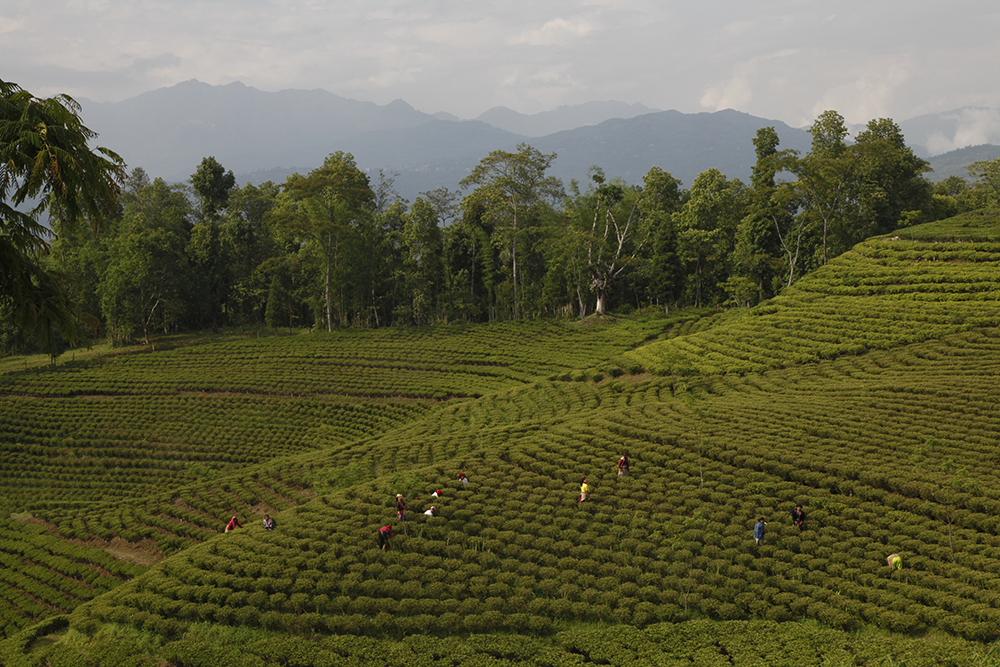Every year, many of you eagerly await the first spring harvests from Darjeeling. But as you perhaps know, the first Darjeelings of the year aren’t the best, and it’s a good idea to hold back.
As it happens, I’ve just selected a rather exceptional Kotagiri Frost from Tamil Nadu. Although Southern India produces vast quantities of tea, the quality is rarely up to scratch. However, if you look carefully, you can find small plantations that produce remarkable teas at certain times of year. This is the case with this Kotagiri Frost, which will be available in a couple of weeks. Enjoy savouring it while the winter mists clear from the Himalayas and give the young shoots freedom to grow.
First-flush teas
A question of altitude
The harvests will begin soon in Darjeeling. Happily, the tea is still picked by hand. The low-altitude plots are harvested first, for a simple reason: the tea plants have benefited from higher temperatures, meaning the terminal bud has grown faster. We can see that this photo was taken at the bottom of the valley, due to the gentleness of the slope and the density of the covering that protects the bushes from excess sunlight.
An inaccurate French name
The first Darjeelings of the year are generally described as the “first flush” in English, but in French, they’re known as the “spring harvest”. The latter is misleading as the harvest doesn’t fully coincide with the season. There are two reasons for this. Firstly, the low-altitude plantations that use irrigation techniques benefit from more clement weather and sometimes start producing small batches from the end of February. Secondly, the leaves on the same shoots are harvested every eight to ten days, and after three successive growths, the shoot’s thwarted growth leads it to send out a side shoot (this is known as the banjhi), which is of a lower quality and marks the end of the first harvests. This means that the so-called “spring harvests” actually come to an end around mid-April.
Darjeeling Opens the Season
First flush teas are often the best, as the year’s first harvest. With winter coming to a close, cold nights keep the plants growing slowly, which results in richer flavours. Every year, it is Darjeeling that opens the season, before Nepal, China, or Japan.
In March, I sometimes taste nearly a hundred teas a day, with each of the 87 tea estates in Darjeeling manufacturing very small batches—sometimes no more than 20 or 30 kilos. In this region, during the period when the highest quality of tea is produced, one day’s harvest is never mixed with the next. The result is a constant parade of very different tastings. Buyers snap up the very best batches in a matter of hours, at premium prices, which is why it is so important to know every producer and maintain the best possible relationship with each of them.
The first harvest is the best
Since the start of May, I’ve been tasting and choosing the best teas of the season from Japan. They’re called Ichibanchas because they’re the first to be harvested in the year. Japanese teas come from the regions of Shizuoka and Uji, and in the south of the archipelago. In the north of the country, the tea plant grown everywhere is Yabukita, whereas in the south, with its warmer climate, less Yabukita is grown. For example, here, near Kagoshima, the Yutaka Midori cultivar dominates, and represents nearly 60% of production.
An unusual season
The Darjeeling season is going to be a strange one. The really amazing teas are priced out of reach (30% to 50% higher than in previous years) to compensate, the planters say, for the losses they sustained during the 105 days of strikes last year. So far I’ve bought, on the best possible terms, the following: Mission Hill DJ4 SFTGFOP1 Clonal, Puttabong DJ14 SFTGFOP1 Clonal Exotic, Puttabong DJ12 SFTGFOP1 Clonal Queen, Orange Valley DJ5 SFTGFOP1 cultivar China, Balasun DJ6 SFTGFOP1 Himalayan Mystic, and Rohini DJ15 FTGFOP1 Exotic White, all exclusive. They’re of a remarkable quality and will delight enthusiasts. For those wanting first-flush Darjeelings at lower prices, you’ll have to wait. Firstly, the only teas that are cheap are very poor quality, and secondly, even the mediocre teas are priced high, or very high. They’re absolutely not worth it. To sum up, this year requires more vigilance than usual.
For fans of Himalayan teas who aren’t focused on Darjeeling, and who are looking for good deals, why not wait for the Nepalese teas? They’ll be ready soon and often represent excellent value for money.
New-season Chinese teas: an incomparable variety
Tea has been consumed in China for more than 3,000 years, and it is only in this country that we find such a rich variety. It produces all colours of tea: white, green, blue-green, yellow, black and dark. In China we find a unique culture of terroir: one village might have been following a very specific tradition of tea shaping for centuries, while in the next village the leaves could be processed in a completely different way. Nowhere else in the world do we find such a variety of practices. This photo shows my 2017 selection of “new-season” Chinese green teas, some of which were harvested before the Qingming festival. From left to right: Pre Qing Ming Bi Luo Chun, Pre Qing Ming Long Jing, Pre Qing Ming Bourgeons de Jade, Pre Qing Ming Lu An Gua Pian, Pre Qing Ming Anji Bai Cha, Bai Mao Hou, Mao Feng Premium, Yong Xi Huo Qing, Huang Shan Mao Feng. It goes without saying that just as the size, shape and colour of the leaves differ so much, the tasting experience is equally varied among these premium teas.
There’s a spring tea for everyone
For those who want to try spring – or first-flush – teas, here are some tips. Darjeelings harvested in March and April develop sustained floral notes accompanied by a touch of astringency and bitterness. For a combination of brioche and floral aromas, try Nepalese first-flush teas, which are harvested from the start of April. Those who enjoy chestnut, mineral and vegetal notes would do well with new-season Chinese teas. (The rarest and most sought after, and therefore the most expensive, are those known as pre-Qingming teas, harvested before Chinese Tomb-Sweeping Day which takes place at the beginning of April). Lastly, for fans of iodine, cut grass and steamed vegetable notes, Japanese Ichibanchas are a pure delight. They are harvested between the end of April and the middle of May. Of course I haven’t covered them all here, and there are other countries to discover, but if we are talking about springtime and nature reawakening, and you want teas that evoke gardens and rising sap, these are the ones I think of first.
How we choose our first-flush Darjeelings
First-flush Darjeelings are the most difficult teas to buy, because production is not organised like it is elsewhere. In Darjeeling, they pick leaves from the same plants every seven to 10 days, and as plantations are divided into around 10 plots, it means they are constantly harvesting. As soon as the leaves are picked, they are processed; this batch is then sold as one lot. This means that each of the region’s 80 plantations produce a tea every day, and those are just the whole-leaf teas – the best, of course. These plantations do not mix the leaves from one day with those from the next day. The result is that six times a week for around six weeks, each of the 87 plantations puts a tea up for sale. This totals around 3,000 different batches of first-flush – or spring – Darjeelings to taste. Quality can vary considerably from one batch to another. Even when they come from the same plantation, one tea can be a hundred times better than another, if you want to quantify those differences.
Of course you cannot rely wholly on the name of a garden, or on a variety; that would be too simple. Only blind tasting allows you to judge a tea’s quality. This must be done quickly, very quickly, because although there are not many of us who receive these samples (only around 30 buyers in the world), sometimes a very good tea can sell just 30 minutes after the few grams of the sample have been received. So you need to work quickly while remaining calm and focused. But these teas that come from the roof of the world are generally worth the effort. They are the first teas of the season. They have a lovely spring freshness and incomparable floral, zesty aromas.
Spring follows spring
After Darjeeling, we turn our attention to Nepal, China and Japan, to enjoy their new spring teas. In Japan, we return to the farmers we know, and we also enjoy discovering teas from others. In China, we are guided by the traditional appellations, which are attached to a particular village. In Nepal, we know which plantations are capable of producing the best teas at particular times of year. There is sometimes an added difficulty though, like here at Kuwapani. The planter, who was an employee rather than the owner of the plantation, has left. What will the results be like under his successor? We’ll know the answer in a few months’ time. Meanwhile, let’s enjoy tasting the new teas this spring has to offer!

